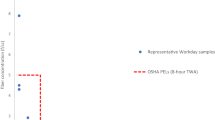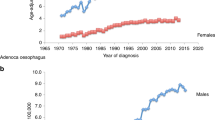Abstract
The purpose of this cohort study is to shed further light on the potential carcinogenic effect indicated by a Swedish case control study of the 2,4-dichlorophenol and 4-chloro-ortho-cresol based phenoxy herbicides, unlikely to be contaminated with 2,3,7,8-tetrachlorodibenzo-p-dioxin (2,3,7,8-TCDD). In the present study it was the intention to include all persons employed in manufacture of phenoxy herbicides in Denmark before 1982. The predominant product was MCPA and only a very limited amount of 2,4,5-T was processed in one of the two factories included in the study. Registration of the cohort was based on company records, supplemented with data from a public pension scheme from 1964 onwards. Ninety-nine percent of registered employees could be followed up. Cancer cases were identified by linkage with the National Cancer Register. Totals of 3,390 males and 1,069 females were included in the study. In the analysis special attention was given to soft tissue sarcomas (STS) and malignant lymphomas (ML) which are the diagnostic groups indicated to be associated with exposure to phenoxy herbicides in the Swedish studies. Five cases of STS were observed among male employees in contrast to 1.84 expected cases. This result supports the Swedish observation of an increased risk of STS following exposure to phenoxy herbicides unlikely to be contaminated with 2,3,7,8-TCDD. However, several potential biases have to be taken into account in interpretation of this observation and these are discussed. Seven cases of ML were observed among male employees in contrast to 5.37 expected which does not support the Swedish observation of an excess risk. The total cancer risk among persons employed in manufacture and packaging of phenoxy herbicides was equivalent to the cancer risk in the Danish population. Among males thus employed 11 lung cancer cases were observed in contrast to 5.33 expected. Attention should be given to exposure to spray dried MCPA-sodium salt in the plants, but other work place exposures and tobacco consumption may have contributed to the increased risk. The tabulation of data by many diagnostic groups may explain the excesses observed for rectum cancer among males and cervical cancer among females. The study has revealed that several potential biases have to be taken into account when the Swedish observations are tested in other settings.
This is a preview of subscription content, access via your institution
Access options
Subscribe to this journal
Receive 24 print issues and online access
$259.00 per year
only $10.79 per issue
Buy this article
- Purchase on Springer Link
- Instant access to full article PDF
Prices may be subject to local taxes which are calculated during checkout
Similar content being viewed by others
Rights and permissions
About this article
Cite this article
Lynge, E. A follow-up study of cancer incidence among workers in manufacture of phenoxy herbicides in Denmark. Br J Cancer 52, 259–270 (1985). https://doi.org/10.1038/bjc.1985.186
Issue Date:
DOI: https://doi.org/10.1038/bjc.1985.186
This article is cited by
-
Association between occupational exposures and sarcoma incidence and mortality: systematic review and meta-analysis
Systematic Reviews (2021)
-
A prospective study of cancer risk among Agricultural Health Study farm spouses associated with personal use of organochlorine insecticides
Environmental Health (2017)
-
Cancer risk among residents of Rhineland-Palatinate winegrowing communities: a cancer-registry based ecological study
Journal of Occupational Medicine and Toxicology (2008)
-
Review and Meta-analysis of Risk Estimates for Prostate Cancer in Pesticide Manufacturing Workers
Cancer Causes & Control (2006)
-
Adipose levels of dioxins and risk of breast cancer
Cancer Causes & Control (2005)



